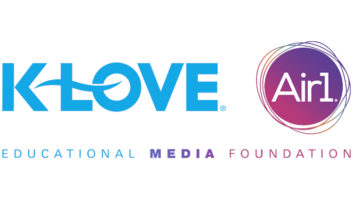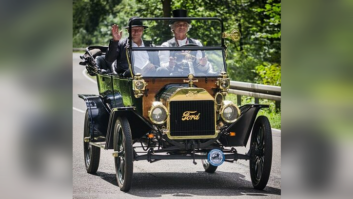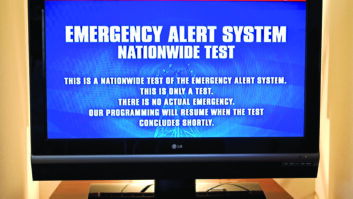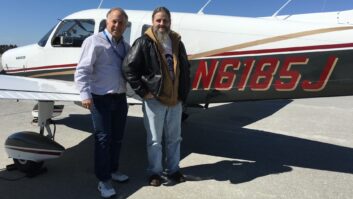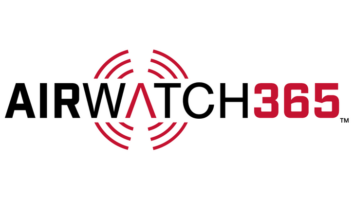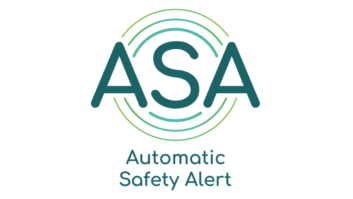Open Mic: IBOC History, part 1
May 1, 2007 12:00 PM, by Chriss Scherer, editor
In March, the FCC approved rules that change IBOC from its experimental status to an approved system. The system that is now known as HD Radio can trace its early development to concepts and ideas that were proven to work with mobile reception in 1992. The first successful fixed AM IBOC reception test was held on July 9, 1992, on 1660 AM from the Xetron facility in Cincinnati. The first fixed FM IBOC reception test was held Sept. 29, 1992, on WILL-FM in Urbana, IL.
As HD Radio moves forward, I wanted to take a look back at the beginnings of the system to recall its early phases. I talked to Glynn Walden, who was part of the original team that proved the concept could work, and that set into motion the technology developments that are being implemented on radio stations today.

Today, Walden is the senior VP of engineering for CBS Radio.
Radio: The first steps into developing an IBOC system began more than 15 years ago. Tell me about the very beginning of the system that today is known as HD Radio.
GW: It started when Paul Donahue of Gannet and Tony Masiello of CBS experimented with digital audio satellite transmissions. They were impressed with the fact that a digital audio signal on a satellite channel required less power than a comparable analog signal to achieve similar if not better signal-to-noise ratios. They reasoned that a low-power digital signal could be added to an existing analog signal to carry a digital version. This approach was the first in-band, on-channel (IBOC) development. Donahue came up with the acronym IBOC.
They had been working on it for three or four months, at which time they contacted Group W, and I became involved.
Radio: What was the next step?
GW: The project was sponsored by Dan Ehrman of Gannett, Nancy Widman of CBS and Dick Harris and Jim Thompson of Westinghouse. Bob Mazer, a communications and technology lawyer, became involved at this time also.
Each sponsoring company pooled some funds and provided all the free time that could be spared by the three of us. I think that this was around 1991. It was September 1992 when the FM IBOC system was first demonstrated. Some of this was also in reaction to the Eureka-147 video demonstration at the NAB Radio Show in the fall of 1990.

Outstanding in their field during the first AM IBOC transmission. Left to right: Paul Donahue, Gannett; Ron Rackley, duTreil, Lundin & Rackley; Tony Masiello, CBS; Glynn Walden, Westinghouse; Denny Palmer, Xetron; Barry Carlin, Xetron.
Radio: The first AM IBOC broadcast preceded the first FM IBOC broadcast by two months. Today, the FM system appears to be ready to go, while the AM system seems to have some challenges. What was the course of the development of the two systems?
GW: The AM development was ahead of the FM for many years. It took time to properly complete some of the FM details. The basic AM system was already planned, and many of the elements needed were already defined. There have been plenty of refinements from the original plan, but today’s basic AM system was designed by Barry Carlin. The original system was wider in bandwidth and failed under 90 percent of the power lines. Brian Kroger made some major changes to the AM system, which he essentially completed in 2001.
The FM systems went through a number of incarnations before it was workable. The earliest designs all fell apart in multipath conditions.
Radio: Tell me about the early FM systems.
GW: The first FM system used four OFDM carriers � two on each side [of the main carrier]. It was not at all mobile robust. This was followed with a true multicarrier system that failed to work in a mobile environment. Then we came up with a system that used orthogonal wideband carriers. I call this the Derek Kumar system. This one was mobile robust, but it was not a viable system. The system in use today was primarily designed by Brian Kroeger at USA Digital Radio, which he designed between 1998 and 1999.
The earlier systems were designed as proof of concept systems without an intent that they would be commercially viable systems. The USADR team, led by Kroeger, was charged with designing a system that could be deployed for AM and FM broadcasting.
�Online Extra Listen to this interview as a podcast. (21MB)

Radio: So it’s really been about 10 years since we have had a working and viable system.
GW: Keep in mind that around 1996, the radio industry was totally absorbed in consolidation. Westinghouse was buying CBS, Gannet was selling it stations. These companies lost total focus on digital radio. About 1997 we finally got the attention of Michael Jordan, CEO of Westinghouse. Jordan provided enough seed money to have an outside technology company make a determination as to whether IBOC was feasible. The evaluation showed the IBOC was not only possible, but nothing new had to be invented, just careful implementation of existing technology. The initial core of USA Digital Radio development was operated out of the Westinghouse Wireless Solutions offices in Linthicum, MD. In 1998, Westinghouse spun off USA Digital Radio to a group funded by 10 of the top 12 broadcasters.
By then, the framework of the AM and FM systems was established. All that was left were the details. By 1999 we had systems that remain essentially unchanged to date.
In the next installment, we’ll conclude our conversation with Glynn Walden as we look back at the beginning of IBOC technology.
